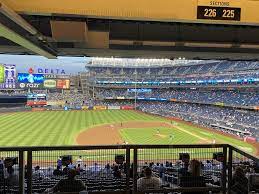How Long Do Major League Baseball Games Last?
If you’re wondering how long do Major League Baseball games last, you’re not alone. Injuries and the Pitching clock are all factors that can lengthen a game. The home team’s bats in the bottom of the 9th inning also extend the game’s length.
Average length of a Major League Baseball game
The average length of a Major League Baseball game is 3 hours and 10 minutes. While the pace of the game may slow down during playoffs, the regular season is typically the same length. With timers and limited mound visits, the game typically lasts about three hours. For comparison, the average length of a World Series game is roughly two and a half hours.
During the 1970s, a Major League Baseball game took approximately two hours and 30 minutes. This length was further extended by longer commercial breaks between innings, and players taking more time between pitches and at bats. Given that the average human attention span is eight seconds, the longer game lengths are causing concerns about viewership and younger fans.
A game’s length is also affected by the weather, such as a rain delay. Certain games take longer than others, especially if the temperatures are high or cold. In cold and hot weather, playing is more difficult, so the game time is longer. Fortunately, baseball games tend to be shorter if players are able to play efficiently in the temperatures.
The average length of a Major League Baseball game has been increasing steadily for years. In 1900, the average time of a game was about an hour and a half. It increased to two hours and 30 minutes in the 1960s and 1970s and two hours and 58 minutes in 2001.
Baseball is an American sport that brings emotions to both players and spectators. It is one of the most popular forms of recreation with an average attendance of over twenty thousand people. The game is also one of the most action-packed sports in history. The average length of a game has steadily increased over the years, but baseball officials have been working to keep games moving as quickly as possible. While the number of bases on the field is crucial to the outcome of a game, the longer game is not necessarily better.
A Major League Baseball game is typically nine innings long. In contrast, a youth baseball game can last up to seven hours. Currently, the average length of a Major League game is three hours and nine minutes.
Pitching clock
In baseball games, there are a number of rules governing the pitcher’s time. Generally, a pitcher has two pitches per plate appearance, and he or she has two minutes to pitch. However, there are times when the pitcher has more time to complete a pitch. For example, in a game that involves a lot of runners on base, the pitcher may be able to complete three pitches per plate appearance.
Adding a pitch clock to MLB games will help speed up play. The league has tried testing the new rule in independent league baseball and minor league affiliate baseball, and it helped. In the first year, the average time of a minor league game was reduced by about 26 minutes. The MLB hopes to create a shorter game and make baseball more exciting for fans.
The pitch clock is designed to reduce the amount of time between pitches, which will reduce the time the pitcher spends on the mound. It is also intended to reduce the amount of dead time between pitches. While pitch clocks are not a perfect solution, they will help speed up games and decrease downtime.
The new pitching clock in MLB games makes it harder for batters to steal bases. Pitchers have only 15 seconds to throw a pitch when there are no runners on base and twenty seconds if there are runners on base. If the pitcher violates the clock, he will be penalized with a ball. Besides the new pitching clock, MLB has also introduced a pickoff rule, limiting how many pickoff throws a batter is allowed in one plate appearance. A third pickoff throw will result in a balk.
Major League Baseball has announced sweeping changes to its rules in the next few years. The pitch clock will be a standard part of the game by 2023. It will also prohibit defensive shifts and increase the size of the bases. The pitch clock will be a crucial part of the process. The timing of pitches will be set by a clock and will be enforced by umpires.
The new pitch clock will have a significant impact on game length. The average game time will be shorter by as much as 25 minutes. In addition to reducing game length, a pitch clock will also reduce strikeouts and increase the number of walks.
Home team bats in the bottom of the 9th inning prolongs the game
If the home team leads the game by two runs or more after the top of the ninth inning, they have a chance to tie or win the game in the bottom half of the ninth inning. A walk-off home run, hit, or balk could win the game, extending the game to a 10th and final inning. The top of the inning, on the other hand, refers to the first half of the inning, which ends once the defense has recorded three outs.
